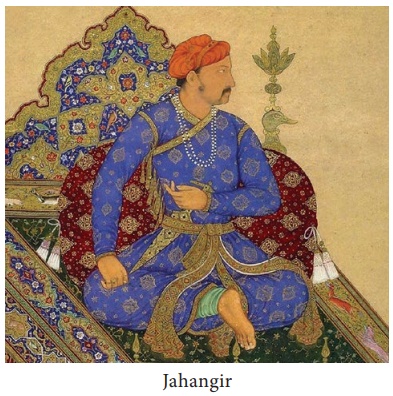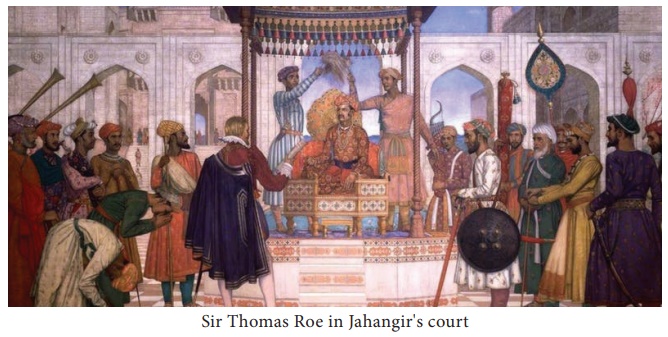The Mughal Empire - Jahangir (1605–1627) | 11th History : Chapter 14 : The Mughal Empire
Chapter: 11th History : Chapter 14 : The Mughal Empire
Jahangir (1605–1627)
Jahangir (1605–1627)
Akbar was succeeded by his son Salim with the title
Nur-ud-din Jahangir. He was Akbar’s son by a Rajput wife. His ascension was
challenged by his eldest son Prince Khusrau who staged a revolt with the
blessings of Sikh Guru Arjun Dev. Prince Khusrau was defeated, captured and
blinded, while Guru Arjun Dev was executed. Jahangir also tamed the rebel
Afghan Usman Khan in Bengal. Mewar, which had defied Akbar under Rana Udai
Singh and his son Rana Pratap Singh, was brought to terms by Jahangir after a
military campaign led by his son Prince Khurram (later to become Emperor Shah
Jahan) against Rana Amar Singh, the grandson of Rana Udai Singh. They concluded
a treaty whereby Rana Amar Singh could rule his kingdom after accepting the
suzerainty of Jahangir. In 1608 Ahmad Nagar in the Deccan had declared
independence under Malik Ambar.
Malik Ambar
Brought as a slave from Ethiopia to
India, Malik Ambar changed several hands before landing at the hands of the
Prime Minister of Ahmad nagar named Chengiz Khan. Malik Ambar learnt about
statecraft, military and administrative affairs from Chengiz Khan. After the
death of Chengiz Khan his wife set Malik Ambar free. By dint of his hard work
Malik rising through several ranks became the Military Commander and Regent of
one of the south Indian Sultanates.

In the Deccan Muslims and Marathas had united to resist Mughal hegemony in their bid to preserve their distinct regional and political identity. Malik Ambar was the brain behind this move. Trained by Malik Ambar the Marathas became a force to reckon with after Malik’s death at the age of 78 on 14 May 1626.
Several attempts by prince Khurram to conquer Ahmad
Nagar ended in failure. Prince Khurram had conquered the fort of Kangra after a
siege of 14 months. Kandahar, conquered by Akbar from the Persians in 1595, was
retaken by the Persian King Shah Abbas in 1622. Jahangir wanted to recapture
it. But he could not achieve it due to the rebellion of Prince Khurram.
Jahangir’s reign witnessed the visit of two Englishmen – William Hawkins and
Sir Thomas Roe. While the former could not get the consent of the Emperor for
establishing an English factory in India, the latter, sent as ambassador by
King James I, succeeded in securing permission to establish a British factory
at Surat.

Jahangir was more interested in art and painting and gardens and flowers, than in government. His Persian wife Mehrunnisa, renamed as Nur-Jahan by Jahangir, became the real power behind the throne. The political intrigues that prevailed because of Nur-Jahan, led Prince Khurram to rebel against his father but due to the efforts of Mahabat Khan, a loyal general of Jahangir, the rebellion could not be fruitful. Prince Khurram had to retreat to the Deccan. The intrigues of Nur-Jahan also made Mahabat Khan to rise in revolt which was effectively handled by Nur-Jahan. Mahabat Khan also retreated to Deccan to join Prince Khurram. Immediately after the death of Jahangir, Nur-Jahan wanted to crown her son-in-law Shahryar Khan but due to the efforts of Nur-Jahan’s brother and Prince Khurram’s father-in-law Asaf Khan, Prince Khurram succeeded as the next Mughal emperor with the title Shah-Jahan. Nur-Jahan, who ruled the empire for ten years, lost her power and influence after Jahangir’s death in December 1645.

Related Topics